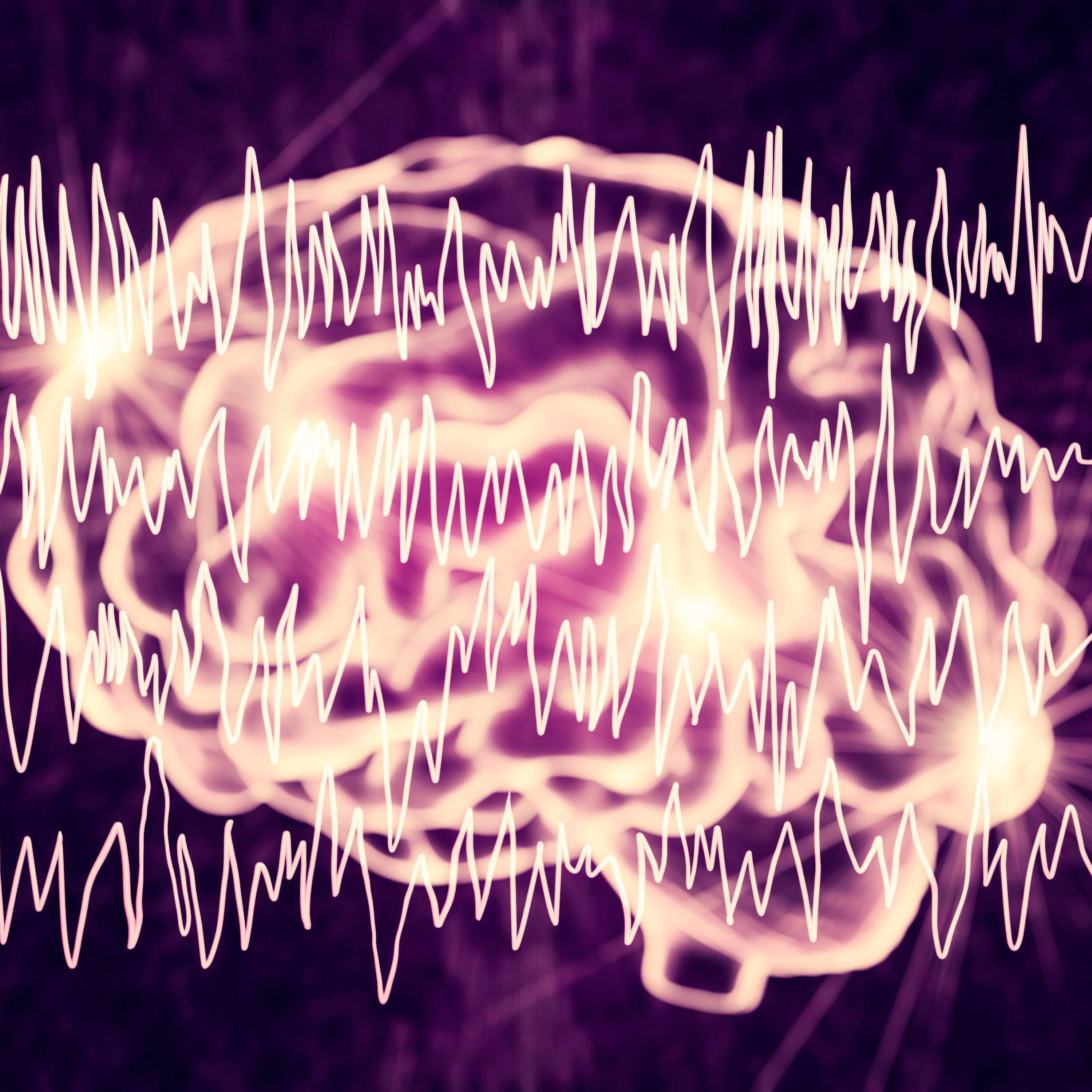-
Discovery’s Edge: Renaissance in medicine
Renaissance means rebirth or regeneration. Every few generations medicine takes a major turn. We’re at one of those junctures now with regenerative medicine — where healing is triggered from within the human body. It's bringing a whole new universe to how physicians provide care.
Deer grow, shed and then regrow their antlers. Sea stars sacrifice but then regrow their arms. This is regeneration, and every species — from amoeba to human — is inherently capable of it to some degree (think fresh, smooth skin forming below a scab).
By getting down to the nitty-gritty of how cells differentiate and muster to form tissues and organs, researchers have turned the corner on understanding the way regeneration works. Engineers have come up with techniques for assembling cells into large, three-dimensional structures, and for building automated bioreactors (culture vessels) for mass production of cells and engineered tissues. Now, a patient’s own cells can be harvested, tweaked, and used to help regrow their missing or damaged tissues, and even to make lab-grown organs for transplant.
Regenerative medicine helps bodies mend themselves, providing cures for people who have been living — until now — without treatment options. It’s a whole new realm of healing.
Mayo Clinic is offering regenerative-based alternatives to address a rapidly expanding range of health issues. And it’s created a regenerative medicine portal that’s open to everyone. Andre Terzic, M.D., Ph.D., director of the Mayo Clinic Center for Regenerative Medicine explains, “This is a radical shift from caring for patients to curing patients, and it’s being advanced from head to toe. It’s a true renaissance in health care.”
A shift in focus
According to the World Health Organization, by 2020, degenerative diseases — in particular cancer, diabetes, and cardiovascular and respiratory conditions — will collectively cause more than 70 percent of all deaths in the world.

The damage inflicted by chronic conditions is usually there to stay, like heart muscle scarred after a heart attack, insulin-producing beta cells destroyed by diabetes, or a spinal cord severed in an auto accident. Symptoms can be managed, some better than others, but the underlying issues remain unhealed.
Regenerative medicine is the reverse of degenerative disease. It’s the science of boosting healing in missing or damaged tissues.
Globally, progress is steadily being made treating diseases like autoimmune disorders, cancers, cardiovascular conditions, metabolic diseases, musculoskeletal conditions, ocular diseases and more, using regenerative approaches. For example, a stem cell therapy to treat Parkinson's disease is entering clinical trials in Australia, and a procedure to regenerate the eye has successfully treated children with cataracts in China.
Mayo Clinic is practicing regenerative medicine across its health system (in hospitals and healthcare facilities in over 70 communities), and has begun more than 40 regenerative-relevant clinical trials.
Portal to a new realm
The Center for Regenerative Medicine is scaling-up regenerative services across medical specialties (from neurology to ophthalmology to sports medicine) and standardizing regenerative products (like tailor-made stem cells). It’s part of what Dr. Terzic calls “a blueprint for regenerative medicine,” translating research discoveries into clinical practice.
By rolling out an effective, comprehensive model of regenerative care, Mayo Clinic — a trusted destination for medicine and surgery — is translating scientific breakthroughs, accelerating advancement and reaching more people in more places. Patients and physicians from, say, a front porch in rural America, or an internet café in urban South Asia can enter the online portal and call or email the Center's consult service directly to find out what options are available to them today. This service gets care providers, researchers, patients and their families talking, bringing everyone into the loop as research moves forward and new therapies are imagined and brought into practice. “This is very much a game changer,” says Dr. Terzic, “an investment in the future of health care.”
Breaking through: Innovations and diffusion
To ensure safe and effective patient use, regenerative biotherapies need to be manufactured at clinical grade quality. Teams of researchers and physicians are building on each of the Center for Regenerative Medicine’s platforms (groups of technologies) to create new treatments for patients.
Some regenerative medicine technologies — such as heart transplants — have been in place for decades. These treatments save lives and have paved the way to the advances coming to fruition now.
Stem cells are the polestar for many emerging regenerative medicine treatments.
Every living thing, little and big, plant and animal, is made up of cells working together to form tissues like muscle, skin or bone. Each type of cell has its own, dedicated task, which is all well and good, but a muscle cell, for example, can’t ever become a skin cell, or vice versa, and it can only divide to reproduce itself a limited number of times. Stem cells, on the other hand, can morph into multiple cell types, and can proliferate longer. That’s what makes them special.

Andre Terzic, M.D., Ph.D., is the Michael S. and Mary Sue Shannon Family Director, Center for Regenerative Medicine, and the Marriott Family Professor of Cardiovascular Diseases Research at Mayo Clinic in Minnesota.
Most people don’t think about adults having stem cells, but we do. Our stem cells occur in rare but potent populations within most organs and act as a natural repair system for the body. Adult stem cells, though, can only give rise to their own tissue-specific cell types. For example, while bone marrow stem cells are valuable for treating cancers of the blood, they are less effective for regenerating other tissues.
Donated umbilical cord stem cells are a little more biddable — but, like any donated cell or tissue, they sometimes trigger host versus graft disease (a dangerous reaction that develops because of genetic differences between the donor and the recipient). So, what’s next?
Stem cells made from the patient, for the patient.
About a decade ago, the Nobel Prize winning work of Shinya Yamanaka, M.D., Ph.D., of Kyoto University laid the groundwork for what is now a fairly routine procedure — deriving induced pluripotent stem (iPS) cells from a patient’s own skin cells. Why is this useful and why have so many Mayo Clinic investigators embraced this technology? Because iPS cells are made from the patient, for the patient (not from donors), and because they can be coaxed into becoming the type of cells needed for transplant and maybe even fine-tuned to fix disease-causing defects.
Produced in Mayo's BioTrust, iPS cells also make it easier to test drugs and determine the most effective treatments, and to advance the understanding of disease progression by making it possible to compare cells derived from patients who have inherited diseases to cells derived from their healthy family members.
Three approaches to regenerative medicine
Diseases, injuries and birth defects are treated using three approaches by the Center — regeneration, rejuvenation and replacement.
1 Regeneration — delivering specific types of cells or cell products to diseased tissues or organs, where they will ultimately restore function.
Regeneration can be achieved using cell-based therapies or by using molecules made by cells, like growth factors or antibodies.
Bone marrow transplant is a cell-based therapy that’s been in use for half a century. Similarly, umbilical cord blood transplants have helped patients for decades. Both of these sources of blood-forming stem cells are useful for treating diseases like blood cell-related cancers.
 More than half of the clinical trials that fall under the Center for Regenerative Medicine's purview involve the use of stem cell-based therapies of one kind or another. Dennis Wigle, M.D., Ph.D., a thoracic surgeon at Mayo Clinic in Minnesota, is performing one such trial aimed at regenerating lung tissue. He and his team are working to develop new therapies for people with a wide range of lung diseases, including chronic obstructive pulmonary disease and cystic fibrosis. First they collect cells from the skin of people with various end-stage lung diseases and then they turn them into patient-specific stem cells, and grow them into lung cells with a view towards delivering them back to the patient.
More than half of the clinical trials that fall under the Center for Regenerative Medicine's purview involve the use of stem cell-based therapies of one kind or another. Dennis Wigle, M.D., Ph.D., a thoracic surgeon at Mayo Clinic in Minnesota, is performing one such trial aimed at regenerating lung tissue. He and his team are working to develop new therapies for people with a wide range of lung diseases, including chronic obstructive pulmonary disease and cystic fibrosis. First they collect cells from the skin of people with various end-stage lung diseases and then they turn them into patient-specific stem cells, and grow them into lung cells with a view towards delivering them back to the patient.
In a cell product-based therapy trial, Morie Gertz, M.D., a hematologist also at Mayo Clinic in Minnesota, is treating a disease called amyloidosis, in which abnormal proteins are deposited in tissues. Usually, all the proteins in the body are biodegradable and recyclable, but amyloid proteins cannot be broken down, and as a consequence, they build up in the heart, kidney, liver and nerves, sometimes causing multiple organ failure. Dr. Gertz’s team is using monoclonal antibodies, a cell product made in the Cellular Therapy Laboratory, to mimic the body's own immune system and to dissolve these deposits.
2 Rejuvenation — boosting the body's natural ability to heal.
Regenerative medicine uses rejuvenation to remodel cells and tissues, promoting self-healing processes, something like the way bones mend themselves.
One illness Mayo Clinic is treating by rejuvenation is renal artery stenosis, a narrowing of the blood vessels carrying blood to the kidneys, usually due to hardening of the arteries. In a patient with renal artery stenosis, less blood reaches the kidneys, which the body misinterprets as low blood pressure. This signals the release of hormones from the kidneys, leading to an increase in blood pressure (hypertension) that can damage one or both kidneys. Renal artery stenosis may account for up to ten percent of the 50 million people in the U.S. who have hypertension.
Even if the high blood pressure is addressed, kidney function does not usually return on its own. “The problem is that once the inflammation gets started, it gets kind of hard to put it out,” explains Stephen Textor, M.D., a hypertension specialist at Mayo Clinic in Minnesota. His team, composed of nephrologists, radiologists, laboratory medicine specialists and molecular biologists, is using adult stem cells to boost tissue repair in kidneys damaged by renal artery stenosis. In a clinical trial, they have observed blood flow and function returning to rejuvenated kidneys. “It’s steering tissues away from inflammation and wedging them into repair mode,” says Dr. Textor.
3 Replacement — using healthy cells, tissues or organs to replace damaged ones.
While formidable, organ transplantation is in great demand. Right now, more than 120,000 Americans are waiting for a transplant from a living or deceased donor.
Transplants engineered from a patient’s own cells offer opportunities to overcome the donor shortage, and minimize the risks associated with organ rejection.

Engineered transplants start with patient-specific anatomical data, which is already used routinely to 3D print complex, computer-designed medical devices. Information is taken from a computerized tomography (CT) scan and, layer by layer, it’s printed out as a perfect model of, for example, a patient’s hip joint. That model can then be sent to a manufacturer to make a custom-designed implant.
Taking it to the next level, 3D printers can also make scaffolds for tissue engineering. The idea is basically to seed cells into a matrix to generate a patient-specific implant — this is called bioprinting.
Because tissues and organs are made up of many cell types in varying patterns, scientists are using bioprinters to mimic living tissue by varying the scaffold properties and the cell types seeded within them. Bioprinting is still experimental, but soon tissues like skin, bone, cartilage, muscles, valves, vessels and even nerves will be (re)generated routinely by combining natural or engineered stem cells with custom, 3D scaffolds. Eventually, transplantable organs like the liver will also be grown in the lab. “It sounds like science fiction,” says Dr. Wigle, “but the truth is that we’re within inches of clinical reality.”
Also at Mayo Clinic in Minnesota, cardiologist Amir Lerman, M.D. is working towards bioprinting heart valves. Heart valve problems can be present at birth or caused by infections, heart attacks, or heart disease or damage; valves can be too tight and not allow enough blood to flow through them, or they can prolapse and leak. In the U.S. alone, about 65,000 heart valves are replaced every year, mostly using prosthetics built from materials like plastic and metal. Among other problems, blood tends to stick to these valves, creating dangerous blood clots. If successful, the valves Dr. Lerman’s team is working on will be a big improvement over even the best possible prosthetic valve, because they’ll have the ability to remodel, regenerate and grow.
Hand in hand with bioprinting, Dr. Lerman’s team is also developing bioreactors to test the valves in a physiologically-relevant environment in the lab, making it possible for the cells seeded into their printed scaffolds to proliferate, migrate, align and differentiate, and thus to become a fully functional tissue system upon implantation.
When the levee breaks
Regenerative medicine is in practice now, meeting patient needs. Every week, long-standing biological questions are answered and new clinical trials commence. We are already standing firmly in a new health realm.
There are still a lot of conditions without treatment options, but there are people working in every corner of the world to remedy that, and Mayo Clinic is pushing ahead, rolling out its regenerative care model, and launching a first-in-class Regenerative Medicine Therapeutic Suite on Mayo’s Florida campus, dedicated to the delivery of regenerative solutions, so as to be ready to translate advancements into practice as they happen.
When speaking of lab-grown organs for transplant, Dr. Wigle puts it this way, “Everyone’s waiting for a eureka moment, but all those eurekas have already happened. Now we’re just waiting for engineering solutions to catapult us forward. We don’t know where the levee is going to break — kidney, lung, heart, but it’s going to happen. Somewhere. Soon.”
- Megan McKenzie, March 2017







